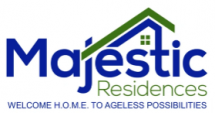There are several senior housing categories in the senior care industry including nursing homes, memory care communities, assisted living communities, independent living communities, and Residential Assisted Living homes (RAL). When looking for the best fit for your loved one, you should first learn the differences between each category in their care levels, activities, and amenities offered.
This article will focus on Residential Assisted Living Homes, or sometimes called Residential Care Homes, Board and Care Homes, Adult Family Homes, Personal Care Homes, and Assisted Living Homes, what they are and what they have to offer. Residential assisted living homes are licensed by their respective state to provide non-medical care to 4 to 16 seniors in a house in a residential neighborhood. An Assisted Living Community, on the other hand, can have over 100 residents located in a commercially zoned property.
There are over 30,000 residential assisted living homes, with the majority of them located in the Western and Central regions of the nation. Residential Assisted Living Homes usually offer private and shared rooms, meals, and personal non-medical care.
Advantages of a Residential Assisted Living Home
One of the most significant advantages of a smaller home is the more one on one attention. This personalized care can translate into a healthier and happier resident. Having much less staff to resident ratio encourages seniors to participate more with what is going on in the house. It is tougher to hide in your room and during social activities when living in a larger assisted living community. Another advantage is pricing. Most RALs are less costly than the larger assisted living communities even though they offer higher levels of care than them.
What Care Level Can A Residential Assisted Living Home Provide?
Assisted Living communities are larger than residential care homes when it comes to the number of residents they can have. The level of care in residential care homes are more personal due to a higher caregiver to resident ratio. A residential assisted living home usually provides a higher care level than a larger assisted living community but has a lower level of care than a traditional nursing home. Residents of residential assisted living homes tend to need more “hands-on” attention with activities of daily living, such as cooking, cleaning, bathing, dressing, grooming, mobility, medication management, toileting, and incontinence care. Besides the physical assistance that is needed, many Residential Assisted Living Homes also have residents requiring memory care assistance in some capacity.
What Kinds Of Amenities Are Provided?
The amenities that are offered in RALs can significantly differ from one home to another, so it is best to inquire within the home that you are touring. Majestic Residences provides a full array of educational and social activities, which include technology not currently used in other homes. For example, a travel discussion group with seniors from multiple homes across the country in a Zoom-like setting, to discuss the places they have visited in their lives. Music groups, Arts and Crafts, age-appropriate exercise activities, and more are also offered within Residential Assisted Living Homes. These kinds of activities are essential to a resident’s physical, social, and emotional well-being.
There are several senior housing categories to choose from when looking for care for your loved one. Each offers very different care levels, activities, and amenities. A Residential Assisted Living Home can be a good fit for your loved one when he or she needs a higher level of care and more general supervision.

